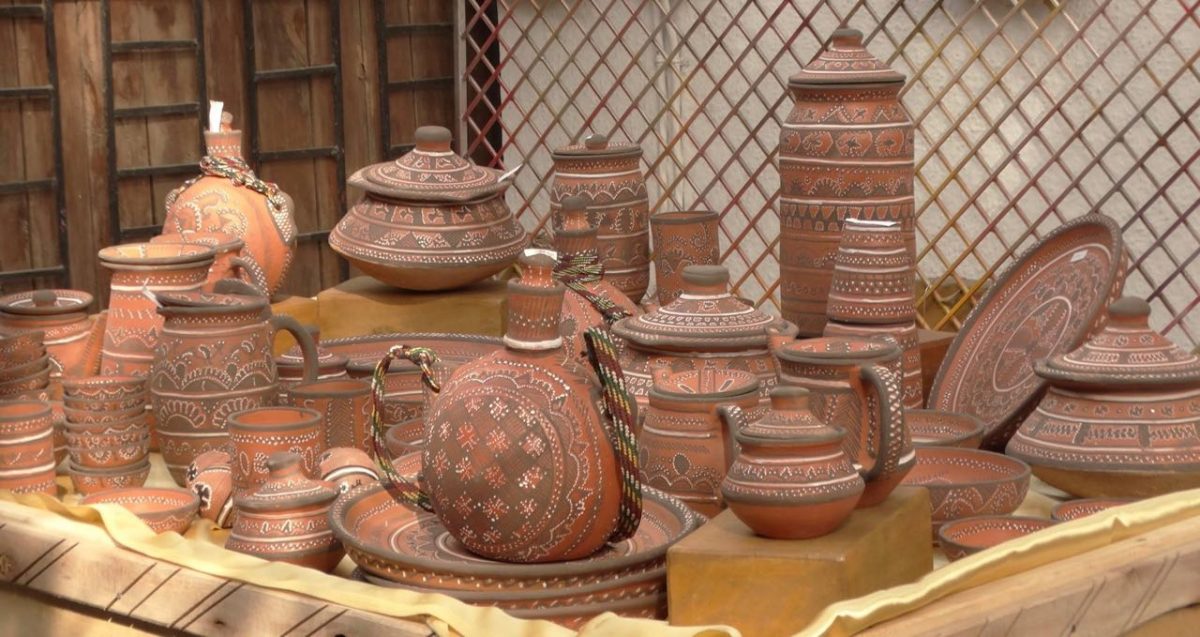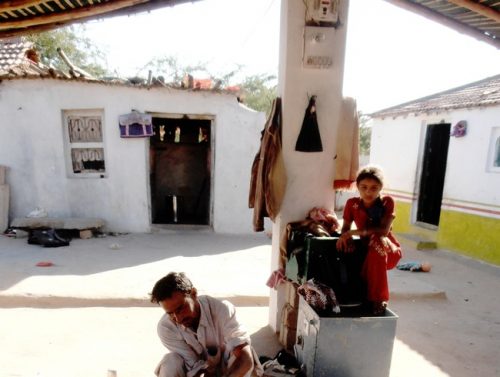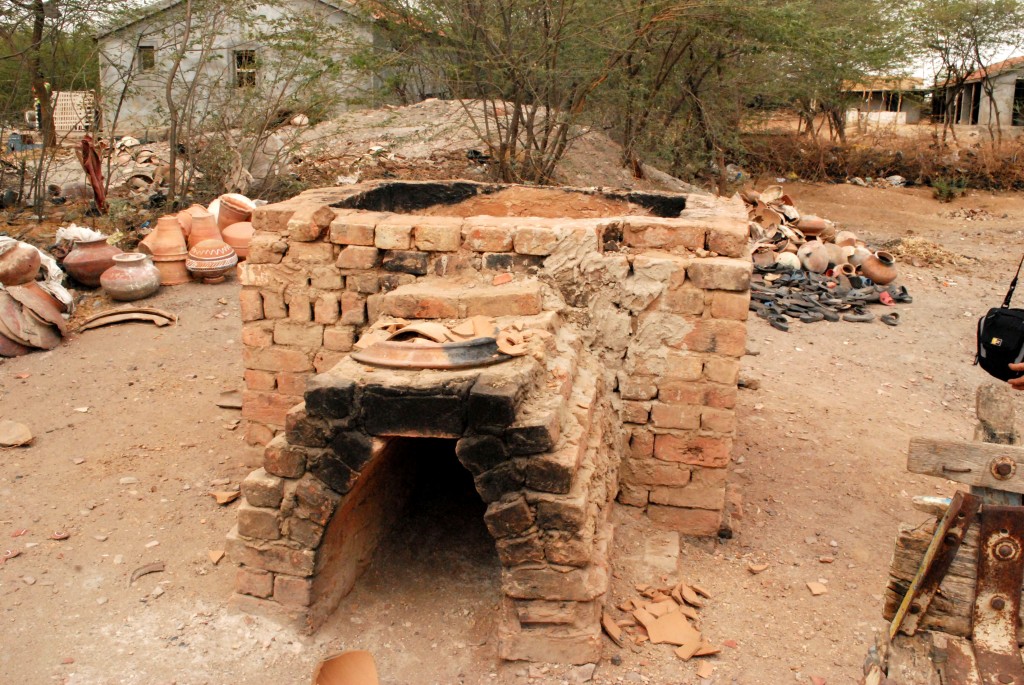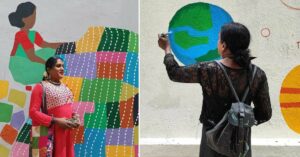TBI Blogs: In a Small Village on the Rim of the Rann of Kutch, a Family Is Keeping an Ancient Craft Alive
Many traditional Indian arts and crafts have been lost due to lack of support for the artisans. Now, a family from a small village in Kutch is trying to keep the rapidly dying handicraft of Khavda Pottery alive, despite a lack of external support.

Many traditional Indian arts and crafts have been lost due to lack of support for the artisans. Now, a family from a small village in Kutch is trying to keep the rapidly dying handicraft of Khavda Pottery alive, despite a lack of external support.
The art of Khavda Pottery started during the Indus Valley Civilisation, in the region of present-day Kutch. The gold and beaded jewellery, terracotta toys and bronze figurines, and seals with symbols found at the sites reflect the objects we use till this day. One such object, unchanged through millennia, is the earthen pot, an ubiquitous object seen all over the country.
In the small village of Khavda, Bhuj, Gujarat, for generations, craftsmen have been making earthen pots with the same process and designs as those seen in the Indus Valley excavations. Khavda is a small village at the rim of the Rann of Kutch. It has skilled craftsmen like Abdul bhai, whose forefathers migrated here from Sindh a few hundred years ago.
They craft a wide variety of vessels, such as matka for water storage, plates, diyas, boxes, ketli, and kulhada to keep buttermilk.
 Rahimabehn at work on a Khavda Pottery water bottle.
Rahimabehn at work on a Khavda Pottery water bottle.
While the men do all the throwing in this pottery craft, the women handle all the surface decoration, which, in this northern Kutch village of Khavda, is primarily in the form of painting. The potter gets mud from a specific acre (a lake) area near their village. It is called “Rann ki Mitti”. This soft clay is shaped into a pot on a potter’s wheel and left to dry in the shade, then Kumbhar women use red, black, and white clay-based paints to decorate each piece of pottery with distinct community-specific designs.
After a while, the pot is cleaned and put in the sun to dry, and then baked in a furnace powered by simple and locally available fuels of dry wood and cow dung. The vessels are coated with a thin wash of geru (red color). The pots of Khavda get their red colour from Geru, a type of soil (ocher/umber), and the black-and-white dots and stripes are also made with natural materials.
Unfortunately, this traditional Khavda Pottery craft of Kutch is diminishing. Out of the ten families who used to practice this craft, there are only two left. The other families have been forced to shift to other livelihoods. Their pottery items used to be made for the local market, but the demand for of these items has decreased dramatically. They have lost the battle against plastic, steel, and Chinese products of everyday use. Today, the artisans are dependent on external markets.
Abdulla Kumbhar, his wife Rahima Behn, and their children are one of the two families that continue the Khavda Pottery traditions in spite of very meagre incomes and extreme hardships in the harsh environment of North Kutch, Gujarat.
Their work environment includes the harsh temperatures of Kutch combined with the smoke, dust, and back-breaking work to burn wood for the bhatti, or pottery baking kiln.
 Abdulla and Rahimabehn’s modest home in Khavda.
Abdulla and Rahimabehn’s modest home in Khavda.
The Heart for Art Public Charitable Trust helped Abdulla and his family get additional income recently by conducting several consumer workshops in Pune where close to 100 art & craft lovers participated in paid workshops, and also bought a lot of their products. While talking to the couple, the organisation found that they have contemplated leaving the craft and doing other things, but have stayed on to keep the craft of our country alive. When asked what will help them stay in the craft, their answer was “regular business and help with infrastructure needs”.
The Trust is now working on getting regular business for their family in several ways, including taking their products into more exhibitions, doing more consumer workshops, etc. It has also started a fundraiser online to help fund the family’s infrastructure needs. Their requirements are quite basic really, that they have been doing without for all these years:
- Additional Pottery Wheel to add to the single (unwieldy) wheel that they now have
- Support their children’s education
- Repairs of the roof of their home to be able to store the finished pottery
- Eco-friendly Gas furnace to bake the pottery items
- Basic Healthcare
They are the last custodians of a dying art form, and need all the help they can get!
 The smoke-filled chulha bhatti the family uses today.
The smoke-filled chulha bhatti the family uses today.
You can help Heart for Art support this family’s needs. Donate to the fundraiser online now.
Like this story? Or have something to share? Write to us: [email protected], or connect with us on Facebook and Twitter.
NEW: Click here to get positive news on WhatsApp!
This story made me
- 97
- 121
- 89
- 167
Tell Us More
We bring stories straight from the heart of India, to inspire millions and create a wave of impact. Our positive movement is growing bigger everyday, and we would love for you to join it.
Please contribute whatever you can, every little penny helps our team in bringing you more stories that support dreams and spread hope.



















